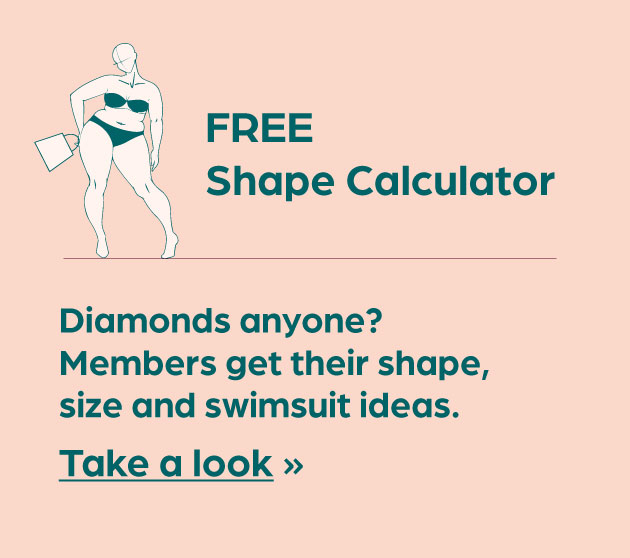Do you know your bone health status? The condition of your bones. The bones you rely on each and every day to help you move and do all the things you want to do.
According to Healthy Bones Australia about 67% of all Australians aged 50 years and older currently have poor bone health (77% being osteopenic and 23% with osteoporosis). By 2033 they estimate that 82%, of the over 50's population in Australia will have poor bone health. 82%!
Poor bone health is silent. There is typically no associated pain. The pain comes with fracture and that's what we want to avoid as we age.
Will you be one of them? Maybe like me, you already are. If you don't know, it's time to find out.
Why Measure Bone Health?
When we're talking about the status of our bone health, we're looking for signs that lead us to a better understanding of the likelihood of fracturing our bones. Because fractures, or bone breaks means pain and immobility. In the case of hip fractures, it significantly increases our chances of dying.
Fracture Risk
It's important to appreciate that not all fractures are created equally. In the context of measuring bone health and fracture risk, Fragility Fractures are what we're talking about.
Fragility Fractures are bone breaks that are caused when you fall or move without great force. Maybe think of them as your 'going about your typical day to day' fractures as opposed to other fractures that might happen under greater force like when you're in a car accident.
"Fractures are more likely to occur in older people, especially older women. Most fractures in older people are due to bone fragility (fragility fractures) and result from mechanical forces quantified as equivalent to a fall from standing height or less (known as low energy trauma)." (World Health Organisation)
That's not to say that all fractures occur in people with poor bone health. No, not at all. But you are much more likely to fracture your bones if you have weaker, fragile bones.
According to Healthy Bones Australia, in 2023, there was one fracture every 2.7 minutes in Australia relating to osteoporosis and osteopenia. This is estimated to rapidly increase to 1 fracture every 30 seconds by 2033.
The most common sites of fragility fractures are the spine (vertebrae), hip, wrist and upper arm.
The Worrying Bones to Fracture
Just as not all fractures are created equally, not all bones that are fractured are either. There are those that stop us from going about our day to day lives, that stop us from moving, moving well. And then there are those that result in death.
In Australia nearly a quarter (23%) of all types of fracture, related to poor bone health, are hip fractures. While the majority of fractures occur at other sites, hip fractures remain the most serious and most expensive type of fracture (up to $40,000 in direct costs). Mortality following hip fracture fluctuates but can reach up to 25% of cases within a year of the incident. (Healthy Bones Australia).
That's 1 in 4 hip fractures resulting in death within the first year.
Fracture Risk matters. That's why knowing your bone health status is important and that's the primary goal in measuring for it.
Measuring Your Bone Health Status
Think of a tool kit when thinking about knowing your bone health status. There are many tools in that kit that give clues to where it's at.
When we measure for bone health we are measuring for bone fracture risk which essentially means we are measuring for bone strength. There are bone markers too which give us clues as to how our bones are making or losing bone.
That's why we talked about the structure of our bones, what our bones are made of and how they Remodel, in Edition 1 of this Bone Health Series. Scroll the Blog to find it.
Measuring Bone Mineral Density
Bone Mineral Density (BMD) is one tool that is thought to help us understand the strength of bones. When we're talking BMD we're really talking about the density of the hard outer shell of the bone called the Cortical bone.
The most common way in which bone density is measured is by having a DEXA (Dual-energy X-ray Absorptiometry) scan. It's a kind of x-ray that takes a 2D image of your bones (and soft tissue like muscles and fat) and applies a mathematical algorithm to that information to come up with a T-Score that represents a 3D assessment of BMD.
A radiologist will review the data and scores from the DEXA and provides a report on the findings using the WHO (World Health Organisation) definitions. The report goes to your GP and relevant specialists.
WHO says that a T-Score of:
- between -1 and -2.5 = Osteopenia - a moderate risk of fracture
- below -2.5 = Osteoporosis - a high risk of fracture
Measurements are (typically) taken at the left hip (at the neck of femur) and lumbar spine (vertibrae 2-4).
You may receive a Z-Score with your DEXA too. A Z-Score compares your results with that of an age matched population (unlike a T-Score which measures your results against that of a population of those in their 20's - at peak bone mass).
WHO defines Osteoporosis as a Z-Score of -1.5 or worse.
DEXA scans are usually done every 2 years because they are unable to reliably detect changes in BMD in intervals less than 18 months.
The accuracy of DEXA scans also depends on the machine used (regularly re-calibrated), consistency of machine (it's recommended that you go back to the same machine each time you have a DEXA done) and the positioning of your body correctly by the radiographer. Incorrect positioning can result in false results.
DEXA scans have been around since the mid 1990's and are often spoken of as being 'the gold standard', though personally I have never understood that claim as they've pretty much been the only way to measure.
In Australia, you're eligible for a free DEXA under Medicare when you're 70 years of age unless you have a condition that puts you in a higher risk category for poor bone health like Rheumatoid Arthritis or an Inflammatory Bowel condition. If you've got a family history of osteoporosis and you've had previous fractures from minor injury, you're also eligible. Find out more about DEXA scan and Medicare rebate eligibility here. And you need a doctor's referral.
Sobering isn't it. You have to have fractured a bone, be significantly post menopausal or have another chronic condition before you're eligible for a rebatable scan to help you find out your bone health status. Of course you can ask to have a DEXA scan any time (getting a referral from your GP) you will need to pay for it in full. In Australia they're about $120-$200 depending on what the radiology practice you go to charges.
This eligibility criteria is way too late to prevent poor bone health...it's nuts! There is so much we can do to prevent poor bone health BEFORE we're 70 when the window then narrows significantly for treatment options. Usually medication by then.
Have you had a DEXA scan done?
Measuring Bone Quality
Bone quality refers to the structural characteristics of bone that contribute to its ability to resist fracture, independent of bone mineral density. It's not just about how much bone you have (BMD) but how well it's built and its resilience. I like to think of it this way. Our bones are like the branches of a tree. In higher winds they bend before they snap - if at all.
BMD is associated with the outer hard part of bones (cortical bone). Bone Quality concerns itself with the inside network or Trabecular part of your spine and hip bones.
This is where a new form of bone scan is making its mark. It's been in clinical practice in Europe and the USA for over 6 years (having been invented by the Italians) and it's been approved for use by the TGA here in Australia.
REMS (Radiofrequency Echographic Multi-Spectrometry Scan) bone scanning, uses ultrasound and radio waves (not radiation). It measures:
- BMD giving T and Z-Scores
- Bone quality (in the trabecular bone area) and with that information comes up with a
- Fragility Score (also approved by the TGA). The fragility score is an indicator of bone quality
- Fracture Risk % by combining the BMD and the Fragility Score
REMS measures both left and right hips and lumbar spine vertebrae 1-4 - so a more than typical DEXA does.
It will also detect bone changes after 6 months (recalling DEXA was minimum 18 months) so if you need to monitor your bone health regularly, REMS can be done in a shorter time frame and because it doesn't use radiation, can be done safely.
The accuracy and repeatability of REMS scanning is superior to DEXA because of the way the technology works. There's no need to go back to the same machine each time to have it done as you do with DEXA.
If you've had an ultrasound before, REMS is very similar in both the look of the equipment and the way in which it's used.
REMS is relatively new. Until I mentioned it, my GP didn't know about it nor had my 2 endocrinologists, or my radiologist friend. It's starting to take off with clinics in Queensland and Victoria (through Bone Compass) and in New South Wales (through OsteoSound). More clinics are opening up as the technology is becoming more known.
You don't need a doctor's referral for a REMS bone scan. It's not yet rebatable by Medicare. The team are working on that. The cost will vary depending on the clinic but is around $160-$200.
I have no doubt it has a solid future in Australia. Another tool to help us understand our Bone Health status better.
I've had a REMS done and I'm a big fan. I had a REMS and DEXA done in July 2024 and the results were very similar. But I got more information and information that I could understand easily from my REMS scan. Having my bone quality and fragility score not only gave me more important information but it eased my concern and gave me the encouragement to keep going with my exercise program, because my bone health is improving. That re-assurance is so valuable.
Dr David Tognarini is a PhD medical scientist who, with his partner Dr. Sherif Youssef (PhD), has brought REMS to Australia. He had a chat with me on my podcast Midlife Unfiltered - The Season of Me. It was so informative about bone health and how REMS bone scanning measures it and how it does it differently (and better) Watch and listen to that episode here.
Measuring Your FRAX
Your bone density scan is just one part of assessing your bone strength. The scan results are usually put together with other information, including a fracture risk assessment.
A fracture risk assessment is a questionnaire used by healthcare professionals to understand your bone strength. The most common fracture risk assessment is called FRAX. It will assess your chance of breaking a bone. Your GP may do this with you.
Bone Marker Tests
These are tests that are typically ordered by your specialist to give additional information that scanning doesn't. They give clues about the remodeling of your bones - at the micro level - osteoblast and osteoclast activity.
"During the bone remodeling process, chemicals are produced which can be detected in the blood and urine. These products are known as 'biochemical markers of bone turnover' or bone markers. An assessment of levels of these markers can be used to measure the rate of bone turnover, thus providing useful information about factors that might affect bone strength. Bone markers are classified as markers of either bone resorption or bone formation. These processes are closely linked together so either type of marker will reflect the rate of bone turnover." (Royal Osteoporosis Society).
My new endocrinologist ordered them for me - the blood test CXT and P1NP. CXT measures bone resorption which is the breakdown of old bone tissue - osteoclast activity. P1NP is a bone marker that measures the rate of new bone formation - the activity of osteoblasts, the cells responsible for building new bone tissue.
Have you had these done for your bone health?
CT & MRI Scans
These are scans that show in greater detail (and in 3D) the status of your bone health. They will show bone fractures as well as give more detailed understanding of bone quality (microarchitecture of that trabecular bone network) in addition to density. They are more expensive (and CT uses more radiation) than DEXA and REMS which is why they are not used routinely. They are none the less additional tools that can be used to assess bone health status and treatment effectiveness.
Where to from here?
Understand your bone health status now if you don't already. Book in for a DEXA and if available to you a REMS bone scan. Measure to know. I realise that you might not be able to claim these scans if you fall out of the narrow band of Medicare rebate eligibility, but I encourage you to make it a priority, make inquiries and get it done.
You will need a referral from your doctor for a DEXA. For a REMS you don't. You can just book it directly. REMS is not currently rebatable. Check with your health insurer if you have one, to find out if they're claimable. You might be pleasantly surprised.
The gap in bone health is HUGE. And it starts with the basics...early diagnosis so that you can manage it pro-actively and feel empowered!
That means measuring to know your bone health status - to get your baseline (your starting point) so that you can measure your progress or decline as you age. If you don't measure, how do you know?
Once you know you can then get the appropriate treatment in place to keep improving. Bone is living tissue and it can be built up over time. Fracture risk can be reduced too.
Stay vigilant. Be aware. Have your bone health on your radar.
Final Thoughts
Bone health is such an important part of our Health Span story. Bones keep us upright, keep us moving and movement means independence and freedom as we age. Good bone health means bridging that gap between our life span (how long we live) and health span (how well we live). Living longer is a great goal, but not if we're not living well.
It's go time right now ladies! Prevention is key when it comes to our bone health (and other aspects of our health too). Early detection means we can chart a new course for our bone health BEFORE it becomes a greater health concern. A disease that can mean we don't get to do all the things we want to do in later life if it starts to call the shots.
It also means each of us needs to be our own health advocate, particularly when it comes to bone health and push hard for that early detection with your health team. Like me, you might find that you are taking the lead, providing them with new information and ways to manage your bone health. Communication is key. Keep the conversation going with your health team - your health span depends on it.
Because girl...you are just getting started!
Remember the contents of this are meant for education purposes only. This newsletter is here to spark thoughts and conversations not to give advice. Conversation not consultation. I'm not a doctor or a qualified health professional offering advice. That's on you to glean from your health team and determine what's best for you.
Anita xx
p.s. Scroll to look out for other blog posts in my Bone Health Series. They're near by so it won't take long to find them :)
===========
OTHER WAYS TO CATCH ANITA:
Podcast: Midlife Unfiltered - The Season of Me.
- Watch and listen to it on Substack (you don't have to have an account to do so. But if you want to know when we post new stuff, subscribe while you're there!). We're also on YouTube. or
- Listen to it where ever your like to listen to your podcasts.
Subscribe to my weekly newsletter Midlife Mojo
I hand curate Midlife Mojo for you with love. Finding recent research on topics that help to step into and through midlife with power. To bring awareness and encourage you to be your own health advocate and ask the questions of your health team to get the outcomes that intuitively you know are the right ones for you. Subscribe here.



